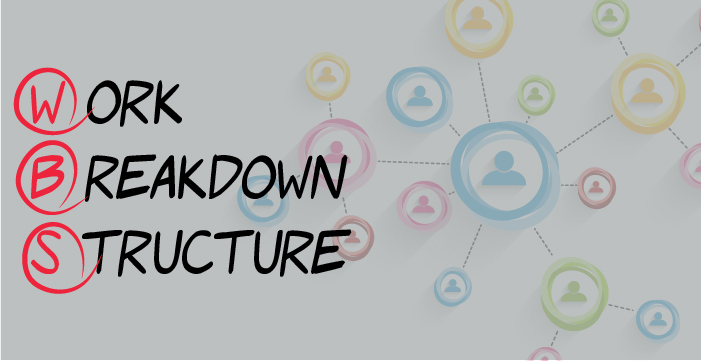
Problems and defects are costly. None of the businesses are willing to shell out excessive money from their pocket. But there are numerous high-profile examples of product recalls due to poorly designed products /processes. Customers have high expectations of these product manufacturers and service providers to deliver high-quality and reliable products. Public criticism of these products is quite natural as customers blame their service providers, manufacturers, or suppliers for selling below-par products that aren’t safe. This blog on “Failure Modes and Effects Analysis (FMEA)” will explain everything you should know about FMEA.
It’s a wide problem affecting nearly every industry. Often, we find faulty products/processes that have various problems with how they have been designed. Issues like these creep in because of the extensive testing phase later in the product development cycle. Identifying any issue at this stage adds up significant expenses and causes a delay in the schedule.
The challenge is to reduce expenses and complete the project in time while building a quality product/process that will delight customers. So that means the challenge is in designing products keeping in mind the quality and reliability factors, thereby never allowing defects to come in the first place. One way to achieve this is by using Failure Mode and Effects Analysis (FMEA). In addition, Lean Six Sigma Green Belt is one of the widely-recognized quality management certifications provided globally. Invensis Learning provides this Lean Six Sigma Green Belt Training that offers 30 PMI PDUs upon completing the Lean Six Sigma Green Belt certification exam.
FMEA was one of the earliest developed methodologies (1950) to increase reliability. Even today, it’s a highly effective tool to lower the possibility of failure. So let’s find out what this method is and how it can help you mitigate excess costs and delays.
What is Failure Mode and Effects Analysis (FMEA)?
FMEA or Failure Mode and Effects Analysis is a structured approach to uncover potential failures that may exist or go unseen within the design of a product, service, or process. This methodology aims to enable organizations to anticipate the various point of failure during the design stage itself to eliminate all possible future repercussions like delayed completion, excess capital expenditure, etc.
In simple terms, FMEA uses a spreadsheet to help professionals identify and note down all that could go wrong within a product or process using qualitative and systematic methods. It also helps us know the possible causes of failures and detects failure before its occurrence. These characteristics help industries take quick and decisive actions that help mitigate failure while creating a reliable and quality product/process.
Failure modes, here are the different ways in which a process/product can fail. On the other hand, Effects are failures that can lead to defects, waste, or unsafe outcomes for the end customer. Thus Failure Mode and Effects Analysis (FMEA) is designed to identify failure modes, segregate, prioritize, and then limit these failure modes from ever occurring.
Types of FMEA
There are different types of FMEA, and we’ll discuss them below to give you an insight. All these types focus on detecting failure modes early on and eliminating them.
Design FMEA
This type of FMEA enables you to identify and address failure modes during the design stage or at the end. It involves breaking down the design into several components and analyzing the potential failure modes.
Process FMEA
This type of FMEA is used in analyzing and maintaining process control objectives. As the name suggests, its performed on processes rather than on products. Like DFMEA, you will break down the process into various components here.
FMECA
It’s known as Failure Mode, Effects, and Criticality Analysis. It brings criticality analysis into the FMEA process.
The other well-known types of FMEA are:
- Functional FMEA
- Software FMEA
- Manufacturing FMEA
- Service FMEA, etc.
Benefits of FMEA
The FMEA consists of many tools to help companies detect failure as early as possible in the process/product design stage. Using FMEA, companies benefit from:
- Multiple options for eliminating the risk
- Verification and Validation of changes increase with FMEA
- Product and process collaborate to create a hassle-free experience
- Helps in enhancing manufacturing and assembly
- Helps lower the entire project costs
When to Perform FMEA?
There are times or phases when performing FMEA makes sense, and they are:
- When you design a new process/product/service
- When you think of improving an existing process or performing in a different way
- Whenever you put up a quality improvement goal for a process/product
- When you need to understand the underlying failure of the process
On top of that, it’s advisable to perform an FMEA throughout the lifetime of a process/product. Quality and reliability factors should be consistently analyzed and improved to achieve optimal results.
We also covered more on the FMEA topic in the previous blog, “8 Powerful Lean and Six Sigma Tools.”
How to Perform FMEA?
Now we understand what FMEA is, its various types, and when to perform FMEA, let’s now understand how to perform FMEA in this section.
Identifying FMEA Failure Modes
The first step in performing FMEA is determining the right participants to determine the failure modes. Because only the right people with the right experience must be involved to catch potential failure modes, these could be designers or process owners. FMEA practitioners could also invite end customers and suppliers to gather alternative viewpoints, provided feasibly.
Once you gather all the participants, the brainstorming session can begin. All the selected participants must identify all systems, processes, components, and functions that could fail or go wrong. Their direct goal is to improve the level of quality or reliability. The designated team must not confine themselves to identifying potential failure modes but also determine its cause.
Criteria for FMEA Analysis
A General FMEA methodology uses three basic criteria to assess an issue, and they are:
Severity
The severity of the effect on the end customer. This criterion incorporates all standards that are important to the specific industry. These could be safety standards, production continuity, loss of business, damaged reputation, environment, etc.
Frequency
Frequency of the problem. This criterion ranks the probability of each failure mode during the expected product’s/process’s lifetime.
Detection
Detection level of the problem (how easy it’s to detect). Many issues pop up, which can be ranked accordingly based on how easy it is to detect problems and take constructive action to prevent failure.
Participants gathered around for completing FMEA on a process/product must set and agree on a ranking scale from 1 and 10. 1 means very low, and ten means very high on the above criteria; Severity, Frequency, and detection. It must be done for each of the failure modes identified. FMEA, although being a qualitative process, is important in using data to stack and qualify the decisions the team makes regarding the ratings they offer.
Once ratings have been given for each of those failure modes, we can find out the Risk Priority Number (RPN). The RPN formula is:
RPN = (Severity) x (Frequency) x (Detection)
Let’s understand that from a simple real-life example:
Suppose you are analyzing the tire of a car and presented with a flat tire scenario. Then the Severity of a flat tire is very high as it will cause frustration to the customer in being unable to drive. So the Severity will be (10). On the other hand, the Frequency is quite low in a normal driving scenario. So we will rate the Frequency as (3). Finally, how easy it is to detect it. It’s quite easy to detect a flat tire, so we will rate the detection as (2).
Therefore the RPN of this particular failure mode will be:
RPN = (10) x (3) x (2) = 60
Setting FMEA Priorities
Once the participants have characterized each failure mode and rated it, they can move on to setting FMEA priorities. This list must be made in descending RPN order. It helps the participants focus where they must focus first and then leave the less priority-based ones to the last.
There isn’t any specific RPN threshold beyond which you must give more attention to failure modes. The best way is to use the Pareto rule. It helps identify 20% of the problems that cause 80% of all the failure modes.
FMEA Corrective Actions
The final stage is for everyone to agree on what the priorities are. Then, moving on to taking corrective actions to reduce or eliminate failure modes or help detect them easily. The leader among the participants will assign these actions and set target completion dates.
Once the corrective actions have been done, the team must meet again to determine and reassess the failure modes and rescore on the different criteria. It improves the effectiveness of the corrective actions taken.
Conclusion
FMEA cannot substitute good engineering; rather, it optimizes good engineering by applying apt knowledge and experience in reviewing the design progress of a product/process by assessing its risk of failure. It’s a valuable tool for businesses to improve their customer experience and leverage it to improve their market acquisitions and retention.
Quality management is the practice of managing quality processes in organizations. Invensis Learning’s Six Sigma Certifications and Quality Management Courses focus on popular approaches to quality management, like Lean Six Sigma Yellow Belt Certification, Six Sigma Green Belt Certification Online, Certified Six Sigma Black Belt, Lean IT Certification, Minitab Essentials Certification, Kaizen Certification and more to take your professional career to the greater heights.

















